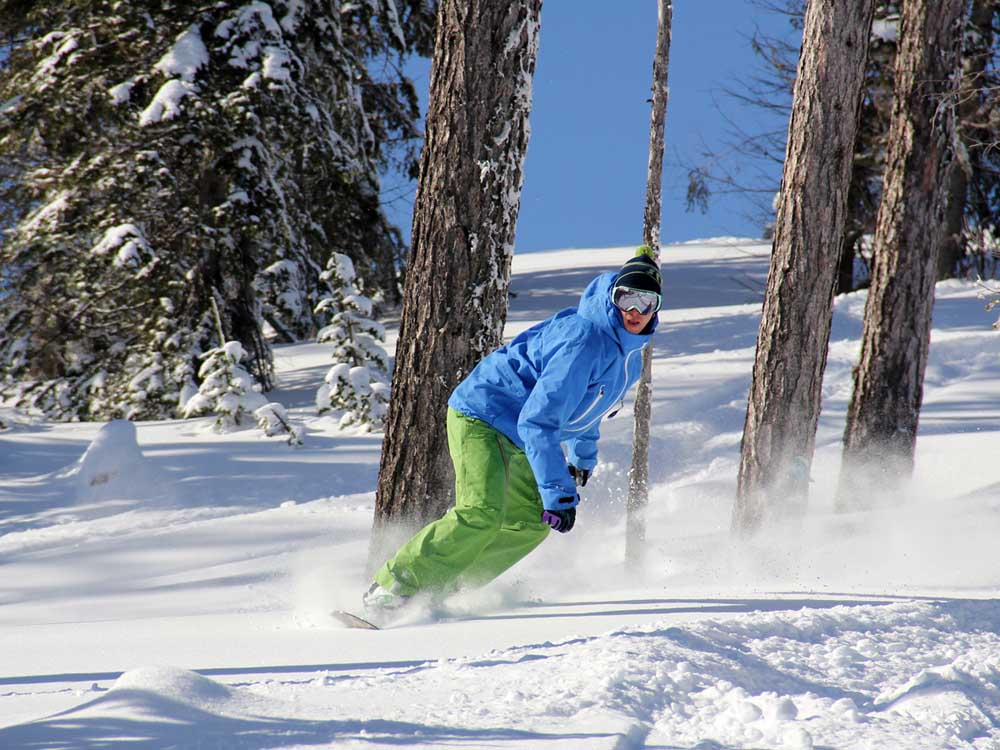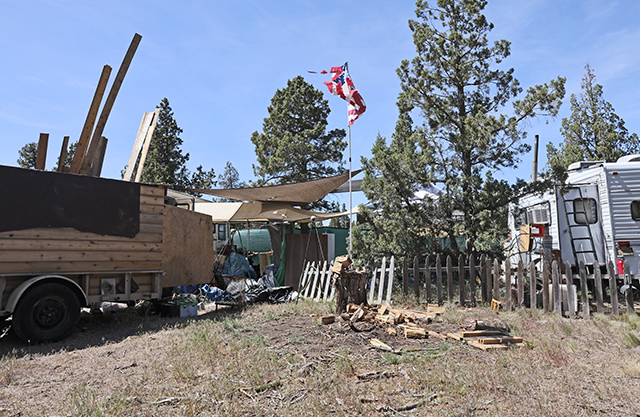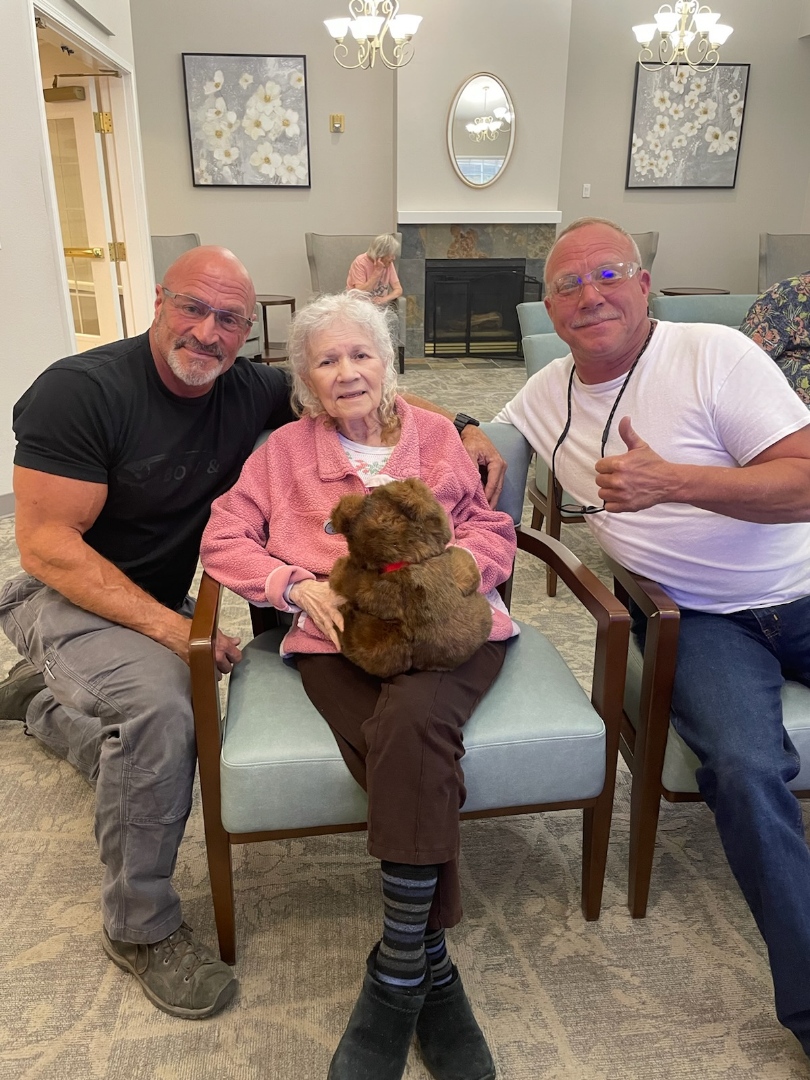Pursuing powder in the Inland Empire
Published 12:00 am Sunday, January 18, 2015

- 49 Degrees North Mountain Resort / Submitted photoA snowboarder at 49 Degrees North weaves his way down a slope in Sunrise Basin, served by a quad chair installed in 2006. Originally established in 1930s, the resort was reborn in 1972 an hour's drive north of Spokane.
{%comp-FF3333-bl%}
COEUR D’ALENE, Idaho — Northwest skiers may get used to driving long distances to schuss downhill at a single resort.
While Central Oregonians are fortunate to have two nearby resorts — expansive Mt. Bachelor and the smaller Hoodoo Ski Area — where they can take turns all winter long, others in this corner of the country are not so lucky. Not including Mount Hood (which boasts three good-sized areas) and Snoqualmie Pass east of Seattle (four hills), ski areas aren’t so closely grouped.
{%pr-3386790%}
{%tr-BDBDBD, 000000, 4%}
The exception is the “Inland Empire” north and east of Spokane, Washington. Within 85 miles (90 minutes’ drive) are five worthy mountains. Two of the Idaho peaks are destination resorts: Schweitzer and Silver mountains both have their own base villages with multiple lodging and dining options. Mount Spokane and 49 Degrees North (in Washington) and Lookout Pass (in Idaho) don’t have the same infrastructure, but all three areas make fine day trips from Coeur d’Alene or Spokane.
My own trip north in December came before the first substantial snowfall of the 2014-15 winter season, and my hoped-for onslaught upon five mountains in five days was limited to intermediate runs on only two of the resort hills. Snow was insufficient for anything more.
But I did drop by for a look at each of the quintet. And now that winter has properly arrived in this corner of the Northwest, in the Rocky Mountain foothills near the Canadian border, I find myself wishing that I had planned my visit a month later.
Schweitzer Mountain
Located so close to the border of British Columbia that you can almost taste the poutine, Schweitzer is the largest of the region’s resorts, with 2,900 acres of skiable terrain and a 2,440-foot vertical from its 6,389-foot summit. (Compare that to Mt. Bachelor’s 3,683 acres and 3,365-foot vertical.) Seven chairs and two surface lifts serve 92 separate runs on this southernmost mountain of the Selkirk Range.
For all its physical attributes, the first thing that catches the eye of most Schweitzer visitors is the panoramic view to the south. On a typical day, vast Lake Pend Oreille may be seen spreading beyond the lakeside town of Sandpoint, 2,700 feet below the base village and 13 miles by road. Often, banks of cloud that pocket the lake between surrounding hills only add to its photogenic qualities.
{%pf-3381730%}
Said to be named for a Swiss-born hermit (in German, “ein Schweitzer”) who lived at the foot of the mountain around the turn of the last century, Schweitzer Mountain Resort opened with a single chairlift at the end of 1963. Through the 1980s, it gradually expanded its acreage to the vast (and more challenging) north side of the mountain, and added such summer activities as mountain biking and a music festival.
Seattle-based Harbor Resorts took ownership at the end of 1998, according to the resort’s website and immediately embarked on a variety of upgrades, beginning with improving the twisting uphill road from Sandpoint. The new owners also expanded the beginners’ area and built a terrain park and tubing center with night lighting below the village. Old lifts were made new and new ones were added — including the high-speed, 6-passenger Stella, housed by a 19th-century carriage barn. In the Schweitzer village, existing lodges were renovated and grand new structures built, all with an eye toward architectural integrity.
Sean Mirus, a Colorado native who has spent years at Schweitzer as its marketing director, loves nothing so much as skiing the trees of the mountain’s north-side Outback Bowl.
“We have more than 1,200 acres of gladed tree skiing,” Mirus said. His favorite run, he said, is Kohli’s Big Timber, a double-black challenge that begins near the top of the 1,900-foot Snow Ghost chair (the resort’s longest) and opens into the Siberia Run Out.
“The trees are nicely spaced, and we leave it ungroomed,” Mirus said. “We do groom some black runs, but we leave other expert runs untouched.”
Less experienced skiers find plenty of great skiing off the Basin Express lift — I enjoyed runs on Midway during my brief visit — or on such slopes as Vagabond and Zip Down, served by Stella. The resort also has about 30 kilometers of cross-country trails for nordic skiers.
“As a ski-in, ski-out resort, with lodging right on the mountain, we are a rarity in the Northwest,” said Mirus, donning his marketing hat. “And with Sandpoint served by Amtrak on its Seattle-to-Chicago route, we become even more of a vacation destination for Northwest skiers.”
{%pl-3381731%}
Silver Mountain
East of Coeur d’Alene, Interstate 90 plies a route through the Silver Valley, developed in the 1880s when wealth-hungry miners discovered gold, silver and lead in the mountainsides.
A sign near the entrance to Kellogg, 36 miles east of Coeur d’Alene, declares itself a “town founded by a jackass and inhabited by his descendants.” A population of 2,100 suggests that the creature was modestly prolific. Legend claims that in 1885 the ass dislodged a rock that, when examined by its owner, was found to be solid silver. Noah Kellogg thereupon filed a claim that became the Bunker Hill Lode, which grew into Idaho’s largest mining operation.
Miners may once have traveled these hills on makeshift skis, but it wasn’t until 1968 that a tiny ski area opened here. Jackass Ski Bowl became the Silverhorn Ski Area five years later, according to a timeline on the resort’s website. After the City of Kellogg assumed management and built a 3.1-mile gondola that opened in 1990 (supported by $8 million in city bonds), it was renamed Silver Mountain.
Today, Silver Mountain is a year-round resort community, with an indoor water park (Silver Rapids) that began operation in 2008 and a 9-hole golf course, Galena Ridge, which opened in 2010. (A full 18 holes are planned.) The Morning Star Lodge, with 277 condominium-style units in three buildings, serves the various shops and restaurants of Gondola Village.
Curiously, the gondola appears to be twice as long as geography might dictate. From Gondola Village (at 2,300 feet elevation), the lift crosses several blocks of the city, climbs over a preliminary ridge, then descends again to an older residential neighborhood before starting its main ascent to Mountain House at 5,700 feet.
This location serves not one but two mountains, offering 2,200 vertical feet of skiing across 1,600 acres served by five chairlifts. I could only ski down the ridge-line Silver Belt trail, from the top of 6,300-foot Kellogg Peak above the rustic Mountain House; had snow cover been more ample last month, I would have liked to tackle some of the glades off Northern Lights.
{%pc-3381735%}
Nearly half of the 73 named trails plunge off 6,200-foot Wardner Mountain, immediately to the west. Among these is Sheer Bliss, a double black-rated run accessed by a slight uphill traverse from the top of Chair 4.
Lookout Pass
The smallest of the region’s five ski areas, but with the greatest average annual snowfall (more than 400 inches), is Lookout Pass — 25 miles east of Kellogg, where I-90 crosses the state line into Montana at 4,700 feet elevation.
{%pr-3381733%}
Lookout is a great place for skiers who like the snow deep but the terrain not too steep. With a 1,150-foot vertical and 540 acres of terrain served by four chairs, it’s similar in size to Hoodoo (1,035-foot vertical, 800 acres, five lifts). Runs extend into national forest lands in both states, making it one of only three U.S. ski resorts to straddle state borders.
About the same time the Sun Valley resort was being built in south central Idaho, the Idaho Ski Club was born here in 1936. A history published on the Lookout Pass website describes how pioneer skiers harnessed a rope to the engine of an abandoned car to operate their first tow. Four years later, club volunteers began offering free ski lessons, as they continue to do today. Over 74 years, they have taught skiing and snowboarding to more than 60,000 youngsters.
The Civilian Conservation Corps (CCC), following its success with Oregon’s Timberline Lodge, completed the construction of a lodge at Lookout Pass in 1941. A lodge expansion in 2005 incorporated that original structure. Local mining companies financed the first chairlift to support employee recreation in 1980; a new ownership group installed additional chairs in 1999 and 2007. Now, with Forest Service approval, Lookout is eyeing 2,000 acres of new growth onto a pair of adjacent peaks.
For now, there are 34 named runs featuring primarily intermediate terrain, as well as several powder caches frequented by expert skiers when fresh powder falls.
Mount Spokane
The nearest resort to Spokane is the Mount Spokane Ski & Snowboard Park, 32 miles northeast of the city via state Route 206. The small resort operates within Mount Spokane State Park, Washington’s largest state park with 13,919 acres.
{%pl-3381736%} With 2,000 feet of vertical and 1,425 acres of terrain, Mount Spokane is larger than Hoodoo but substantially smaller than Bachelor. The largely intermediate hill offers night skiing on 16 of its 45 runs, a huge attraction to Spokane skiers.
The granite-and-timber Vista House, constructed by the CCC in 1933, stands above Chair 1 at the 5,889-foot summit of Mount Spokane. Fully renovated by the state park in 2002, it is open on weekends and holidays to visitors, who put their feet up on the hearth of the huge stone fireplace to enjoy hearty snacks and hot beverages.
The Mount Spokane web site reports that rope tows and a ski-jumping venue were built by local ski enthusiasts in the mid-to-late 1930s. The world’s first double chairlift (Sun Valley had the first single) was installed on the mountain’s south face in 1946, but it lasted for only three seasons. The first permanent chair was built in 1955.
Today there are plans to increase the number from five to six, and at the same time, to expand Nordic ski terrain to 60 kilometers. Snowshoeing and snowmobiling are also encouraged within the park.
49 Degrees North
Many Spokane-area skiers spend their on-slope time at the 49 Degrees North Mountain Resort, a 45-minute drive north of the city via U.S. Highway 395 to Chewelah, then east another 10 miles.
{%pf-3381729%}
Located atop 3,923-foot Flowery Trail Pass between the communities of Chewelah and Usk, this remote resort has plentiful terrain — 2,325 acres, with a vertical of 1,850 feet from a 5,774-foot summit. It’s served by six chairs, plus a surface lift. And a third of its runs are rated advanced or expert.
{%tl-BDBDBD, 000000, 2%}
Nearby Chewelah Peak had a lodge a rope tow in the late 1930s, a double chair as early as 1951, according to the resort’s website. But the ski area closed in 1968, reopening four years later — two miles east of its previous location — with three new lifts and a day lodge. A fourth lift was added in 1980, and in 2006, a quad chair serving 20 new runs opened in the Sunrise Basin expansion area. Finally, in 2012, the Angel Peak chair extended the resort’s reach to a second nearby summit, including additional runs and 170 acres of glades devoted to tree skiing.
For those who don’t want to return to lodging in Spokane, the 2,600 residents of the little town of Chewelah welcome overnight visitors. There are three motels here and a handful of dining choices.
— Reporter: janderson@bendbulletin.com






